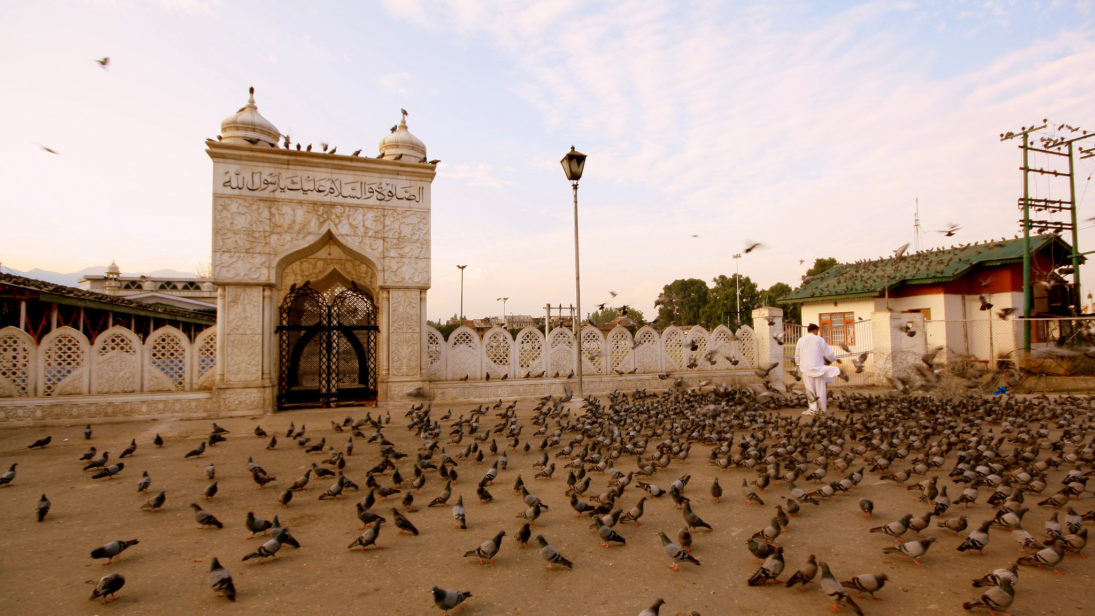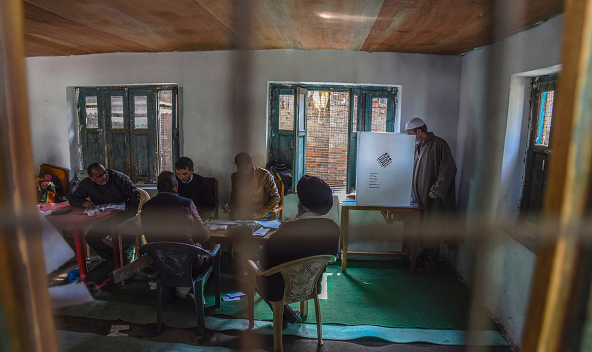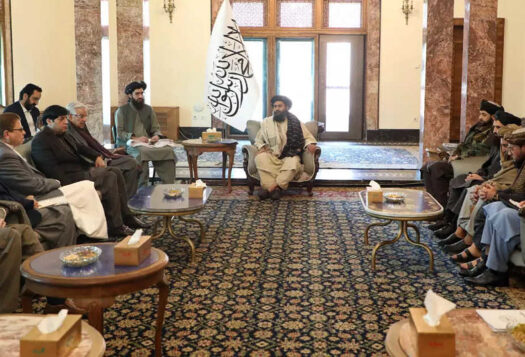
Despite much apprehension over a unilateral ceasefire proposal, Indian Home Minister Rajnath Singh declared a conditional ceasefire, or the Non-initiation of Combat Operations (NICO), for the month of Ramadan in Jammu and Kashmir (J&K) on May 18th. His Twitter statement confirmed the conditional aspect of the initiative, saying, “Security forces reserve the right to retaliate if attacked or if essential to protect the lives of innocent people.” Singh carefully avoided words like “unilateral” and “ceasefire” in his tweets, a fact that suggests this was a deliberate yet tentative decision.
Over the past two years, regular incidents of stone-pelting, civilians entering encounter sites, massive funerals for slain militants, and rising students protests have deteriorated the internal situation in J&K and presented serious challenges for security agencies. Moreover, violent clashes between the government forces and militants have become a recurring phenomenon, and this is likely to continue in the future.
The announcement of the month-long ceasefire is being seen as the third in a year-long series of confidence building measures (CBMs) intended to improve the situation in the region.
In light of these patterns of civil unrest and militancy, there are several plausible political explanations in favor of the ceasefire, including that the ruling Bharatiya Janata Party (BJP) is attempting to strengthen the position of its alliance partner in the coalition government, the People’s Democratic Party (PDP). The conditional ceasefire is an important step towards stabilizing the situation in the Kashmir valley in light of deteriorating security conditions and delayed elections, but it remains too early to predict whether the ceasefire will be a success or failure.
Applying a Healing Touch
Following last year’s appointment of the Union government’s interlocutor Dineshwar Sharma and the amnesty granted to around 10,000 stone-pelting protesters in Kashmir, this announcement of the month-long ceasefire is being seen as the third in a year-long series of confidence building measures (CBMs) intended to improve the situation in the region. The logic behind the ceasefire is three-fold:
First, the announcement came a day before the onset of the Islamic month of Ramadan. This can be seen as an effort to bridge the gap between two of the predominant religious communities in the state, Hindus and Muslims, which widened after the recent Kathua rape incident and the Amarnath Yatra attack in 2017. In this way, the timing of the ceasefire can be seen as an attempt to reach out to the affected population in the Muslim-majority Kashmir Valley while creating a secure environment for the Hindu pilgrimages ahead of the yearly Amarnath Yatra.
The ceasefire decision can be viewed as a means to providing a ‘healing touch’ to the valley, and consequently rebuilding people’s confidence in the democratic set up of the state.
Second, the initiative can be seen as an effort to provide the civilian population in the Kashmir valley temporary relief from violence and unrest. Recently, Prime Minister Narendra Modi expressed his government’s intentions at a public gathering in Srinagar on May 19th, saying, “Whether it is the withdrawal of thousands of cases against students or the decision of ceasefire taken in this holy month of Ramadan, the thought behind it is that every citizen of Kashmir gets stability and development.” Modi’s comments reflect the Centre’s view that the temporary cessation of security operations could provide stability to the local community after almost two years of spiraling violence. Importantly, his visit to the state after the declaration of the ceasefire sends a clear signal that both New Delhi and Srinagar are interested in bridging the trust deficit by calming the environment in J&K and reducing fear of security force operations.
Third, the state government’s foremost priority is to create a stable political environment to hold three crucial elections over the next year: Panchayat polls in the state, by-elections for the Anantnag parliamentary seat, and the Lok Sabha elections in 2019. Taking into account the turbulent security situation, the state government had postponed both the Panchayat elections and the Anantnag by-poll earlier this year. Additionally, the meager turnout of approximately 7 percent of voters in the Srinagar by-poll last year set a precarious political precedent of limited civilian participation and delayed elections across the state. That experience led the state to fear they may have to cancel elections, or else suffer through low voter turnout and violence on or before the polling day. For this reason, the ceasefire decision can be viewed as a means to providing a “healing touch” to the valley, and consequently rebuilding people’s confidence in the democratic set up of the state.

Security Challenges
With limited options in hand, the government needed to take such a political initiative to seewhether a ceasefire could hold under the current conditions in the Kashmir valley. However, holding it for 30 days under the current security environment will be a difficult task for both the government and security forces. Separatist leadership has already termed it as a “cruel joke and a ploy,” one day after the Pakistan-based militant group Lashkar-e-Taiba (LeT) called the ceasefire a “drama.” Nevertheless, these were expected reactions, considering that these separatist political and militant groups are now trying to fill the vacuum left after Hizbul Mujahideen commander Burhan Wani’s death at the hands of security forces in 2016. Such reactions suggest, however, that the militant organizations may not abide by the ceasefire.
On the other hand, from an internal security point of view, the temporary halt in combat operations may give time and space to militant groups to consolidate their logistics supply and plan out future attacks. For this reason, security agencies may feel apprehensive about the decision. This may be why, despite the temporary halt in combat operations, security forces will continue counter-infiltration operations, patrolling on highways, securing army installations, and area domination efforts. In addition to this, security forces have an upper hand against the militants, currently, as these forces have managed to incapacitate many top commanders of different outfits in the valley, dominating vulnerable areas through regular Cordon and Search Operations (CASOs) and Search and Destroy Operations (SADOs), especially after the launch of “Operation All Out” in 2017.
What Lies in the Balance
Only a well thought-out political initiative can bring some stability back to greater Kashmir, as the current security-driven approach has its limitations. Notwithstanding recent successes and killings of over 200 militants in last one year, local recruitment continues unabated, with similar numbers joining different outfits. To this end, the ceasefire decision can be seen as a move in the right direction at an opportune time, which may work in the government’s favor. Moreover, it would be most effective if it is followed up by other government-led political initiatives such as pursuing dialogue with local stakeholders such as mainstream state parties and fulfilling promises made in the Agenda of the Alliance, among others.
Should the ceasefire fail, it may further jeopardize the Centre’s Kashmir policy, hurting the BJP’s alliance with the PDP and Chief Minister Mehbooba Mufti’s influence.
If the ceasefire holds, New Delhi might consider extending it and restarting the dialogue process with different stakeholders in J&K, and, later on, with Pakistan. At present, there is a growing distrust between India and Pakistan over issues such as recent ceasefire violations, and the Indus Water Treaty (IWT) dispute. Nonetheless, National Security Advisor meetings, Track-II initiatives, and a possible dialogue between representatives of both countries’ militaries, depending on the situation on the Line of Control (LoC) and International Border (IB), could take place in the near future if this plays out as planned.
Should the ceasefire fail, it may further jeopardize the Centre’s Kashmir policy, hurting the BJP’s alliance with the PDP and Chief Minister Mehbooba Mufti’s influence, and perhaps damage the local community’s confidence in the political system following the last two years of intense unrest. With much at stake, both New Delhi and Srinagar will be keenly waiting to see whether the ceasefire will hold. For now, however, it remains too early to tell.
***
Image 1: Rajashree Raghavendra via Flickr
Image 2: Yawar Nazir via Getty


